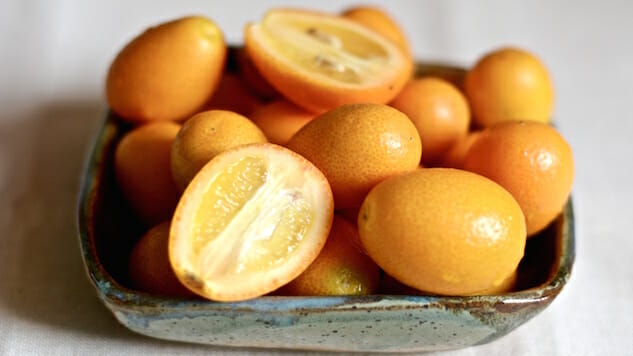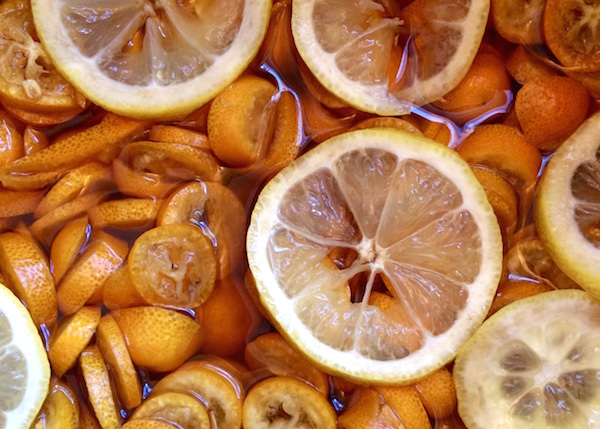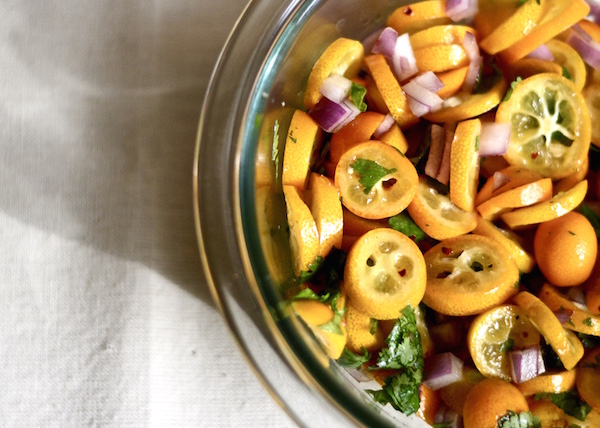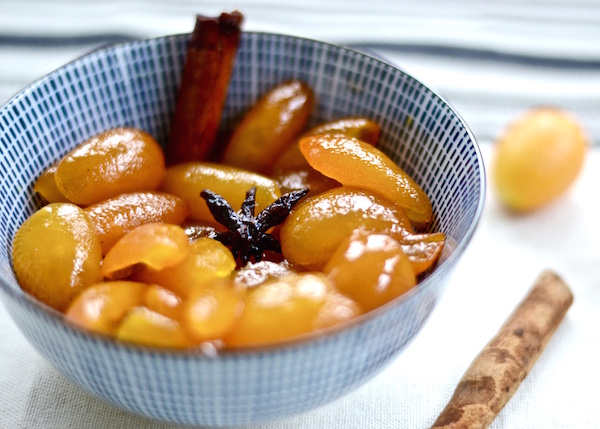6 Ways to Savor Winter Kumquats
Photos by Jenn Hall
In the days leading up to Lunar New Year, kumquat and calamondin trees fill the windows of shops in Philadelphia’s Chinatown. Bright and citrus-scented, the evergreen plants are considered to be auspicious, a symbol of wealth and good fortune. Thankfully, given that the petit orange fruit is uniquely delicious, their use also goes beyond the ornamental. Candied kumquats — crafted from the tiniest of citrus plants — have pride of place during holiday gatherings.
Well…pseudo-citrus, anyway. In actuality, that’s not quite correct. Though a member of the botanical citrus family (rutaceae), kumquats landed their own genus back in 1915: fortunella. As it happens, that was in honor of the London Horticultural Society collector who introduced the diminutive fruit to Europe in 1848, Robert Fortune. Still, the word retains an auspicious ring.
In a way, it’s part of the fruit’s etymological DNA. In Cantonese, “gam gwat” translates to “golden orange,” the latter word sounding like the Cantonese for “good luck” and the former being the word for “gold.” From the green leaves to the golden hue, symbolism abounds.
Believed to be native to China, kumquats were first described in Chinese literature in 1178 A.D. They emerge at the market come winter, a point of brightness when the weather gets dreary. Best of all, they can eaten whole, peel and all, and there is even a twist: the juice and pulp is distinctly sour, while the rind is softly sweet.
Seasonally available from November through March, kumquats are an indulgence worth seeking. They can also be a bit elusive, depending on where you live. So if you see them, hoard them. While writing this story, I cooked through my first batch and ended up engaged in a long, kumquat-seeking adventure that absorbed the better part of an afternoon.
If you’re like me, you’ll probably find yourself eating them by the handful, perhaps rolling them in your hand first to release the essential oils in the rind. But leave room to experiment. From cocktails and candies to savory stir-fries, there’s more than one way to savor this perfect little fruit.
-

-

-

-

-

-

-

-

-

-

-

-

-

-

-

-

-

-

-

-

-

-

-

-

-

-

-

-

-

-

-

-

-

-

-

-

-

-

-

-

 Photo by Jenn Hall
Photo by Jenn Hall Photo by Jenn Hall
Photo by Jenn Hall Photo by Jenn Hall
Photo by Jenn Hall Photo by Jenn Hall
Photo by Jenn Hall






































